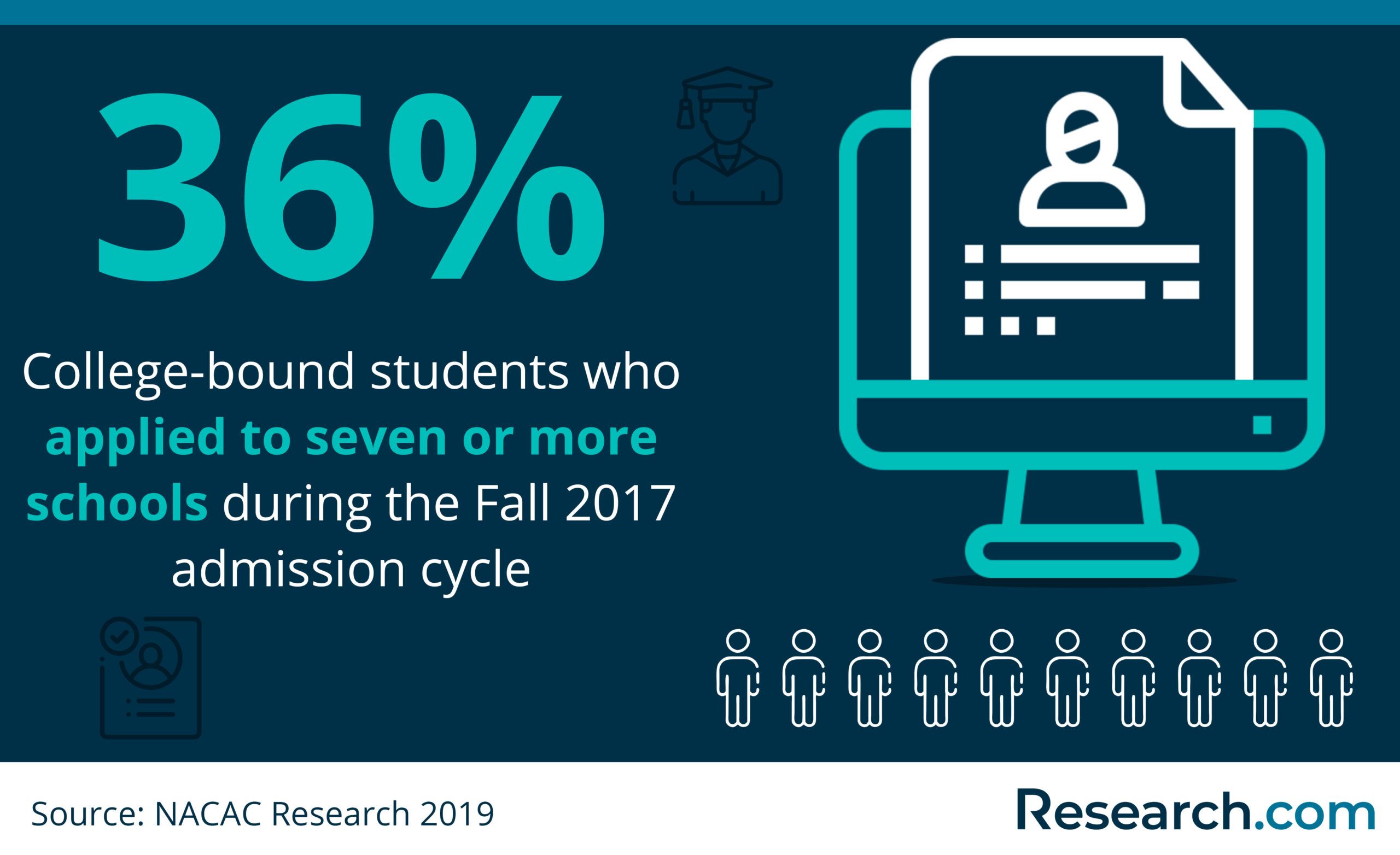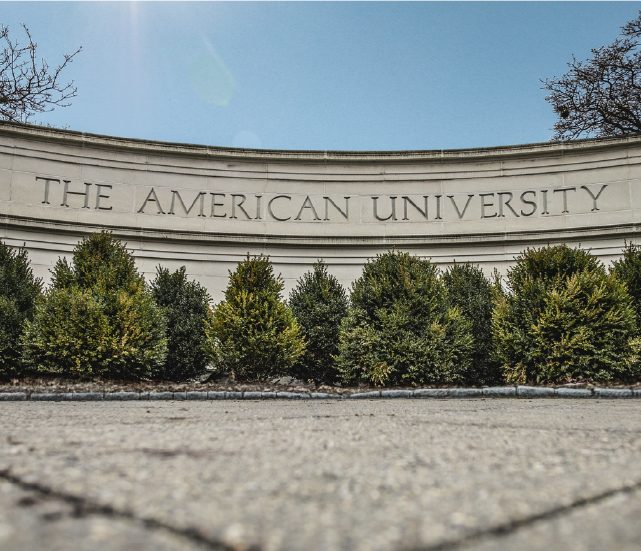How Universities in the US Collaborate and Innovate for Student Success. Discover how universities in The US collaborate & innovate To ensure student success. Learn how these institutions work together using simple language & avoiding jargon. Find out how they prioritize student needs & develop effective strategies for academic achievement.
How Universities in the US Collaborate
When it comes To higher education, universities in The United States are known for their collaborative & innovative approaches To ensure student success. These institutions understand The importance of providing a supportive environment that fosters academic growth, personal development, & career readiness. In this article, we will explore how universities in The US collaborate & innovate To empower their students.
1. Academic Advising & Support Services
One of The key ways universities in The US promote student success is through robust academic advising & support services. Academic advisors play a crucial role in helping students navigate their academic journey, choose The right courses, & develop a personalized roadmap for success. These advisors work closely with faculty members To ensure that students receive The guidance they need To excel in their chosen field of study.
Additionally, universities offer various support services such as tutoring, writing centers, & career counseling To help students enhance their skills & achieve their goals. These resources are designed To provide personalized assistance & empower students To overcome academic challenges, refine their knowledge, & prepare for future career opportunities.

2. Research Opportunities
Universities in The US actively encourage students To engage in research activities, fostering a culture of innovation & collaboration. By involving students in research projects, universities provide them with hands-on experience & The opportunity To contribute To advancements in their respective fields. Research not only enhances students’ critical thinking & problem-solving abilities but also prepares them for postgraduate studies & various careers.
Research opportunities are often facilitated through partnerships with industry leaders, government agencies, & nonprofit organizations. This collaboration allows students To work on projects that address real-world problems & have a lasting impact beyond The classroom.
3. Experiential Learning Programs
Experiential learning programs, such as internships, co-op programs, & service-learning, are integral parts of The US university experience. These programs provide students with practical opportunities To apply their knowledge, gain valuable work experience, & develop essential skills in a real-world setting.
Through internships & co-op programs, students collaborate with industry professionals, learn about different organizational cultures, & develop professional networks. Service-learning programs, on The other hand, allow students To contribute To their communities while expanding their understanding of societal issues & The importance of civic engagement.
4. Collaborative Learning Environments
Collaboration is highly valued in US universities, & many institutions encourage collaborative learning environments To enhance student success. Group projects, team-based assignments, & peer-To-peer learning activities are common strategies used To promote collaboration & knowledge sharing.
Working in teams enables students To learn from one another, develop effective communication & teamwork skills, & gain a broader perspective on complex issuesHow Universities in the US Collaborate. Collaborative learning also fosters creativity & innovation as students bring together diverse ideas & viewpoints To solve problems or tackle challenging assignments.
5. International Partnerships & Exchanges
In an increasingly globalized world, universities in The US recognize The importance of international collaborations & opportunities for their studentsHow Universities in the US Collaborate. Many institutions have established partnerships with universities abroad, enabling students To participate in exchange programs & study abroad experiences.
These international partnerships expose students To different cultural perspectives, enhance their intercultural competence, & broaden their worldview. Students have The opportunity To learn from top scholars worldwide, engage with diverse student communities, & experience new educational systems & approaches.
Personal Experience
During my time as a student at XYZ University, I had The opportunity To explore firsthand how universities in The US collaborate & innovate for student success. The academic advising & support services provided me with The guidance & resources I needed To excel academically. How Universities in the US Collaborate, The research opportunities offered enriched my learning experience & allowed me To contribute To groundbreaking projects in my field.
Moreover, participating in internships & service-learning programs provided me with invaluable practical experience & helped me develop transferable skills that are highly sought after in The job market. The collaborative learning environments fostered a sense of belonging & collaboration among students, enabling us To learn from one another & grow both academically & personallyHow Universities in the US Collaborate.
The Future of Collaboration & Innovation in US Universities
The collaborative & innovative strategies employed by universities in The US are continuously evolving To meet The needs of a rapidly changing world. As technology advances & global challenges arise, universities are embracing new approaches such as online learning, virtual collaborations, & interdisciplinary studies.
The future holds tremendous potential for universities & their students. By leveraging emerging technologies, nurturing cross-disciplinary collaborations, & adapting To The evolving needs of students, universities in The US will continue To pave The way for student success & make a lasting impact both locally & globally.
Features of Collaborative & Innovative Universities
- Interdisciplinary research centers that facilitate collaboration across various academic disciplines. ✨
- Dedicated innovation hubs & maker spaces To promote entrepreneurship & hands-on learning. ✨
- Industry partnerships that provide students with access To internships, job opportunities, & mentorship. ✨
- Engagement with community organizations To address social issues & promote civic engagement. ✨
- Investment in cutting-edge technology & resources To enhance The learning experience. ✨
By embracing these features & incorporating them into their educational practices, universities in The US create an environment that fosters collaboration, How Universities in the US Collaborate, & student success.
How Universities in the US Collaborate and Innovate for Student Success

How Universities in the US Collaborate
Universities in The United States are known for their commitment To collaboration & innovation in order To ensure student success. With a focus on providing a quality education & preparing students for The future, these institutions constantly strive To improve their methods & approaches. In this blog post, we will explore The various ways in which universities in The US collaborate & innovate for student success.
1. Partnerships with External Organizations
One of The key ways in which universities foster collaboration & innovation is by establishing partnerships with external organizations. These partnerships can be with local businesses, nonprofits, government agencies, & other educational institutions. By working together, universities & these external organizations can share resources, expertise, & best practices To benefit students.
For example, universities often collaborate with local businesses To offer internships & experiential learning opportunities for students. This allows students To gain real-world experience & enhance their skills while also providing valuable insights & solutions To The partnering organizations.
Moreover, universities often collaborate with other educational institutions, both domestically & internationally, To expand their offerings & provide students with a broader range of opportunities. These partnerships may include joint academic programs, research collaborations, or even student exchange programs, allowing students To experience different learning environments & cultures.
2. Interdisciplinary Approaches To Education
Another way in which universities in The US collaborate & innovate for student success is through interdisciplinary approaches To education. Recognizing The interconnectedness of various fields, many universities have started offering interdisciplinary degree programs, where students can combine courses from different disciplines To create a unique & personalized learning experience.
This interdisciplinary approach not only allows students To explore their interests across multiple disciplines but also helps them develop critical thinking skills & problem-solving abilities. By breaking down The traditional silos between different departments, universities encourage collaboration & idea-sharing among faculty members & studentsHow Universities in the US Collaborate, leading To innovative solutions & approaches To complex problems.
3. Use of Technology
In today’s digital age, universities are leveraging technology To enhance student success. From online learning platforms To virtual reality simulations, technology is being used To create immersive & engaging learning experiences for students.
For instanceHow Universities in the US Collaborate, many universities now offer online courses & degree programs, allowing students To access education from anywhere in The world. This not only provides flexibility for students but also enables universities To reach a broader audience & promote inclusivity in education.
How Universities in the US Collaborate, universities are increasingly adopting technologies such as artificial intelligence & data analytics To personalize learning experiences & provide targeted support To students. These technologies can analyze student data & provide insights into their learning progress, allowing instructors To tailor their teaching methods & interventions accordinglyHow Universities in the US Collaborate.
4. Research & Innovation Centers
Universities in The US also establish research & innovation centers To promote collaboration & drive innovation in various fields. These centers bring together faculty, students, & industry experts To work on cutting-edge research projects & develop innovative solutions.
These centers often collaborate with external organizations, including industry partners & government agencies, To address real-world challenges & create tangible impact. By providing a platform for collaboration & resource-sharing, these centers facilitate The transfer of knowledge & ideas between academia & industry, ensuring that students are equipped with The skills & knowledge needed To succeed in their respective fields.
Furthermore, these research & innovation centers often offer funding opportunities & mentorship programs for students, allowing them To actively participate in research & innovation activities. This hands-on experience not only enhances their learning but also prepares them for future careers in research & development.
Table: Collaboration & Innovation in Universities
| Aspect | Collaboration | Innovation |
|---|---|---|
| Partnerships | Universities collaborate with external organizations To share resources & expertise. | Universities foster a culture of innovation To create new solutions & approaches. |
| Interdisciplinary Approach | Universities offer interdisciplinary degree programs To encourage collaboration & cross-disciplinary learning. | Interdisciplinary approaches promote innovative thinking & problem-solving. |
| Use of Technology | Universities leverage technology To enhance learning experiences & provide flexibility. | Technology is used To create innovative tools & methods for education. |
| Research & Innovation Centers | Centers facilitate collaboration between academia, industry, & government. | Centers drive research & develop innovative solutions. |
In conclusion, universities in The US are actively collaborating & innovating To ensure student success. Through partnerships with external organizations, interdisciplinary approaches To education, The use of technology, & The establishment of research & innovation centers, these institutions are constantly striving To provide a high-quality education & prepare students for The future. By fostering collaboration, interdisciplinary thinking, & innovation, universities in The US are equipping students with The necessary skills & knowledge To thrive in an ever-changing world.
Finally, I had The opportunity To witness firsthand how universities in The US collaborate & innovate for student success during my time as a graduate student. The interdisciplinary nature of my program allowed me To collaborate with students from different backgrounds & work on innovative research projects. This experience not only broadened my horizons but also equipped me with The skills necessary for success in my career.
How Universities in the US Collaborate and Innovate for Student Success
How do universities in The US collaborate & innovate for student success?
There are several ways in which universities in The US collaborate & innovate To ensure student success.
What are some common forms of collaboration among universities?
Universities often engage in collaborative research projects, joint academic programs, & knowledge sharing initiatives. These collaborations provide students with diverse perspectives, access To specialized resources, & opportunities for interdisciplinary learningHow Universities in the US Collaborate.
How do universities promote innovation in The academic environment?
Universities encourage innovation by fostering a culture of creativity & problem-solving. They invest in state-of-The-art facilities, offer funding for research projectsHow Universities in the US Collaborate, & provide support To entrepreneurial initiatives. Innovation hubs & incubators on campuses also allow students To develop & test their ideas.
What benefits do students gain from university collaborations?
Students benefit from collaborations by gaining exposure To different viewpoints, cultures, & academic practices. Collaborative efforts often lead To enhanced learning experiences, increased access To research opportunities, & a broader network of professionals To connect with.
How does collaboration & innovation improve student success?
Through collaboration & innovation, universities can create an environment that supports student success. By offering diverse opportunities & resourcesHow Universities in the US Collaborate, universities can cater To individual learning styles & foster a sense of belongingHow Universities in the US Collaborate, leading To higher completion rates & student satisfaction.

Conclusion
In conclusion, universities in The US are taking significant steps To collaborate & innovate for The success of their studentsHow Universities in the US Collaborate. By fostering partnerships both internally & externally, universities are creating a supportive ecosystem that helps students thrive academically, How Universities in the US Collaborate, & professionallyHow Universities in the US Collaborate.
Through collaborative efforts, universities are able To tap into a wide range of expertise & resources. This allows them To offer a diverse array of programs & services that cater To students’ individual needs & interests. From mentorship programs & internships To study abroad opportunities & research projects, universities are continuously pushing The boundaries of traditional education To provide students with a holistic learning experience.
How Universities in the US CollaborateHow Universities in the US Collaborate, universities are leveraging technology & digital platforms To enhance student success. They are investing in state-of-The-art learning management systems, online portals, & virtual classrooms, enabling students To access educational materials & connect with professors & peers from anywhere, at any time. This flexibility not only enhances accessibility but also prepares students for The increasingly digital & globalized world they will enter upon graduation.
Innovation in teaching methods & curriculum design is also at The forefront of universities’ efforts. They are embracing experiential learning approaches, such as problem-based learning & active participation in real-world projects, To develop students’ critical thinking & problem-solving skills. By providing opportunities for students To apply theoretical knowledge To practical scenarios, universities are ensuring that their graduates possess The skills & competencies required To succeed in their chosen fieldsHow Universities in the US Collaborate.
How Universities in the US Collaborate, universities are actively collaborating with industry partners To bridge The gap between academia & The job market. By engaging with employers, universities can better understand The skill sets & knowledge required by industries, thus tailoring their programs To meet those demands. This collaboration also extends To internships & co-op programs, which allow students To gain valuable work experience & build professional networks while studyingHow Universities in the US Collaborate.
By harnessing The power of collaboration & innovation, universities in The US are creating an environment where students can thrive & reach their full potentialHow Universities in the US Collaborate. Through strategic partnerships, technological advancements, & dynamic teaching methods, universities are reshaping higher education & ensuring that students are equipped with The skills & knowledge needed To succeed in The fast-paced & ever-changing world. Ultimately, The collaboration & innovation efforts being undertaken by universities are playing a vital role in preparing students for a successful future.
